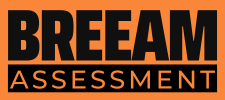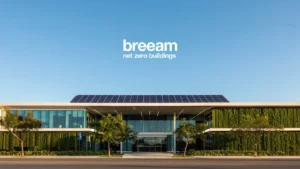In an era where sustainability is at the forefront of global concerns, the construction industry plays a pivotal role in shaping a greener future. Among the many tools available for measuring and promoting sustainability in construction, BREEAM (Building Research Establishment Environmental Assessment Method) stands out as a leading certification system. For UK-based businesses aiming to embrace sustainable building practices, understanding the BREEAM certification process is essential.
Understanding BREEAM Certification
BREEAM, developed by the Building Research Establishment (BRE) in the UK, is a widely recognized and respected environmental assessment method for buildings. It evaluates their sustainability performance across various criteria, including energy efficiency, water usage, materials selection, and ecological impact. The primary objective of BREEAM is to encourage and facilitate the construction of buildings that are environmentally responsible, economically viable, and socially beneficial.
Benefits of BREEAM Certification
The benefits of BREEAM certification extend beyond mere environmental considerations. Embracing sustainable building practices through BREEAM can lead to:
- Environmental Benefits: Reduced carbon emissions, energy consumption, and waste generation, along with enhanced biodiversity and ecosystem preservation.
- Economic Benefits: Lower operating costs due to improved energy efficiency, increased property value and marketability, and access to financial incentives and grants.
- Social Benefits: Healthier and more comfortable indoor environments, improved occupant satisfaction and productivity, and contribution to local communities through sustainable development.
Pre-assessment Phase
The pre-assessment phase serves as the foundation for a successful BREEAM certification journey. It is during this stage that key decisions are made, and the groundwork is laid for the subsequent stages. One crucial aspect of the pre-assessment phase is stakeholder engagement. Engaging stakeholders early on ensures alignment of goals and expectations, fostering collaboration and buy-in throughout the certification process. This may involve convening meetings with project owners, architects, engineers, contractors, and other relevant parties to discuss project objectives, identify potential challenges, and establish a roadmap for achieving BREEAM certification.
Another essential component of the pre-assessment phase is the selection of a qualified BREEAM Assessor. Choosing the right Assessor with relevant expertise and experience is paramount to the success of the certification process. The Assessor serves as a trusted advisor, guiding the project team through the intricacies of BREEAM requirements, providing valuable insights, and facilitating the documentation and assessment process.
Furthermore, the pre-assessment phase entails gathering and preparing documentation and information necessary for the assessment. This includes architectural plans, specifications, environmental impact assessments, energy models, material specifications, and other relevant data. Thorough documentation ensures that the project team has a clear understanding of the project scope and requirements, enabling them to develop a robust sustainability strategy aligned with BREEAM criteria.
Design Stage Assessment
As the project progresses into the design stage assessment, the focus shifts towards translating sustainability goals into actionable strategies and design decisions. One of the key activities during this stage is conducting a preliminary assessment to evaluate the project’s sustainability performance. This involves analyzing various factors such as site selection, building orientation, energy efficiency measures, water conservation strategies, material selection, and indoor environmental quality.
Setting sustainability targets is another critical aspect of the design stage assessment. Establishing specific, measurable, achievable, relevant, and time-bound (SMART) targets ensures clarity and accountability, guiding the project team towards sustainable outcomes. These targets may encompass energy efficiency goals, water consumption targets, waste reduction objectives, and biodiversity enhancement measures, among others.
Developing a comprehensive sustainability strategy is the culmination of the design stage assessment. This involves identifying and prioritizing sustainability measures and initiatives based on their potential impact, feasibility, and cost-effectiveness. The sustainability strategy should outline specific actions, responsibilities, timelines, and performance metrics, providing a roadmap for integrating sustainability into the project’s design and construction phases.
Post-construction Stage Assessment
Once construction is completed, the project enters the post-construction stage assessment, where the focus shifts towards verifying compliance with BREEAM requirements and assessing the building’s environmental performance. This stage involves several key activities, including submitting documentation, conducting site inspections, and making the certification decision.
Submitting documentation to the BREEAM Assessor is the first step in the post-construction stage assessment. The project team is required to provide comprehensive documentation demonstrating compliance with sustainability targets and measures implemented during construction. This may include as-built drawings, commissioning reports, energy performance certificates, material certifications, and other relevant documentation.
Conducting site inspections and assessments is another crucial aspect of the post-construction stage. The BREEAM Assessor performs on-site visits to verify the implementation of sustainable practices and assess the building’s environmental performance against BREEAM criteria. Site inspections may include checks for energy-efficient systems, water-saving fixtures, waste management practices, indoor air quality measures, and ecological enhancements.
Based on the assessment findings, the BREEAM Assessor makes a certification decision, awarding the project with an appropriate BREEAM rating. The certification decision is based on the project’s overall sustainability performance, as evidenced by documentation, site inspections, and compliance with BREEAM criteria. Achieving BREEAM certification signifies the project’s commitment to sustainability and its success in meeting established sustainability targets and objectives.
Certification and Beyond
While achieving BREEAM certification is a significant milestone, the journey towards sustainability does not end there. It is essential for businesses to maintain sustainability standards and embrace a culture of continuous improvement. This involves ongoing monitoring, evaluation, and optimization of building performance, as well as considering recertification as buildings undergo renovations or upgrades.
Maintaining sustainability standards requires active engagement and collaboration among stakeholders, including building owners, facility managers, tenants, and occupants. Implementing performance monitoring systems, conducting periodic assessments, and incorporating feedback mechanisms are essential strategies for ensuring ongoing compliance with BREEAM requirements and achieving long-term sustainability goals.
Continuous improvement involves identifying areas for enhancement and implementing measures to further improve sustainability performance. This may include upgrading building systems for greater energy efficiency, implementing water conservation measures, optimizing waste management practices, enhancing indoor environmental quality, and promoting biodiversity and ecosystem preservation.
Recertification provides an opportunity to reassess and reaffirm a building’s sustainability credentials over time. As buildings evolve and undergo changes, recertification ensures that they continue to meet or exceed BREEAM standards and remain aligned with evolving sustainability best practices. By pursuing recertification, businesses demonstrate their commitment to sustainability and their willingness to uphold the highest environmental standards.
Common Challenges and Solutions
While the BREEAM certification process offers numerous benefits, it is not without its challenges. Understanding these challenges and implementing effective solutions is essential for ensuring a smooth and successful certification journey.
- Budget Constraints: One of the most common challenges associated with BREEAM certification is budget constraints. Implementing sustainable measures often requires upfront investment, which may pose financial challenges for businesses, particularly small and medium-sized enterprises (SMEs). However, it’s essential to recognize that the long-term benefits of sustainability, such as energy savings, reduced operating costs, and enhanced property value, often outweigh the initial costs. Moreover, various financial incentives, grants, and financing options are available to support sustainable initiatives, making them more accessible and affordable for businesses.
- Lack of Awareness and Expertise: Another challenge businesses may face is a lack of awareness and expertise regarding BREEAM requirements and sustainable building practices. Many project teams may be unfamiliar with the intricacies of BREEAM certification and may lack the necessary knowledge and skills to navigate the process effectively. Addressing this challenge requires investing in education and training to enhance awareness and build capacity among project stakeholders. Providing training sessions, workshops, and resources on BREEAM certification and sustainable building practices can empower project teams to make informed decisions and effectively implement sustainability measures.
- Integration with Existing Practices: Integrating sustainable practices into existing construction processes and workflows can pose logistical challenges for businesses. Many construction firms may have established practices and procedures that are not inherently aligned with sustainability principles, making it challenging to implement new sustainability initiatives. Overcoming this challenge requires proactive planning, stakeholder engagement, and collaboration. By involving key stakeholders early in the process and fostering a culture of sustainability within the organization, businesses can streamline the integration of sustainable practices into their operations and ensure a smooth transition towards BREEAM certification.
In conclusion, the BREEAM certification process offers UK businesses a structured framework for embracing sustainable building practices and demonstrating their commitment to environmental stewardship. By understanding the intricacies of the BREEAM certification process and implementing effective strategies to address common challenges, businesses can unlock the full potential of sustainable construction and contribute to a greener, more sustainable future. As we strive towards a brighter tomorrow, BREEAM serves as a beacon of sustainability excellence, guiding businesses on a path towards lasting environmental, economic, and social prosperity.
Ready to embark on your BREEAM journey and transform your vision of sustainability into reality?
Contact our team of experts today to learn how we can help you achieve BREEAM certification for your next project and pave the way towards a greener future.



